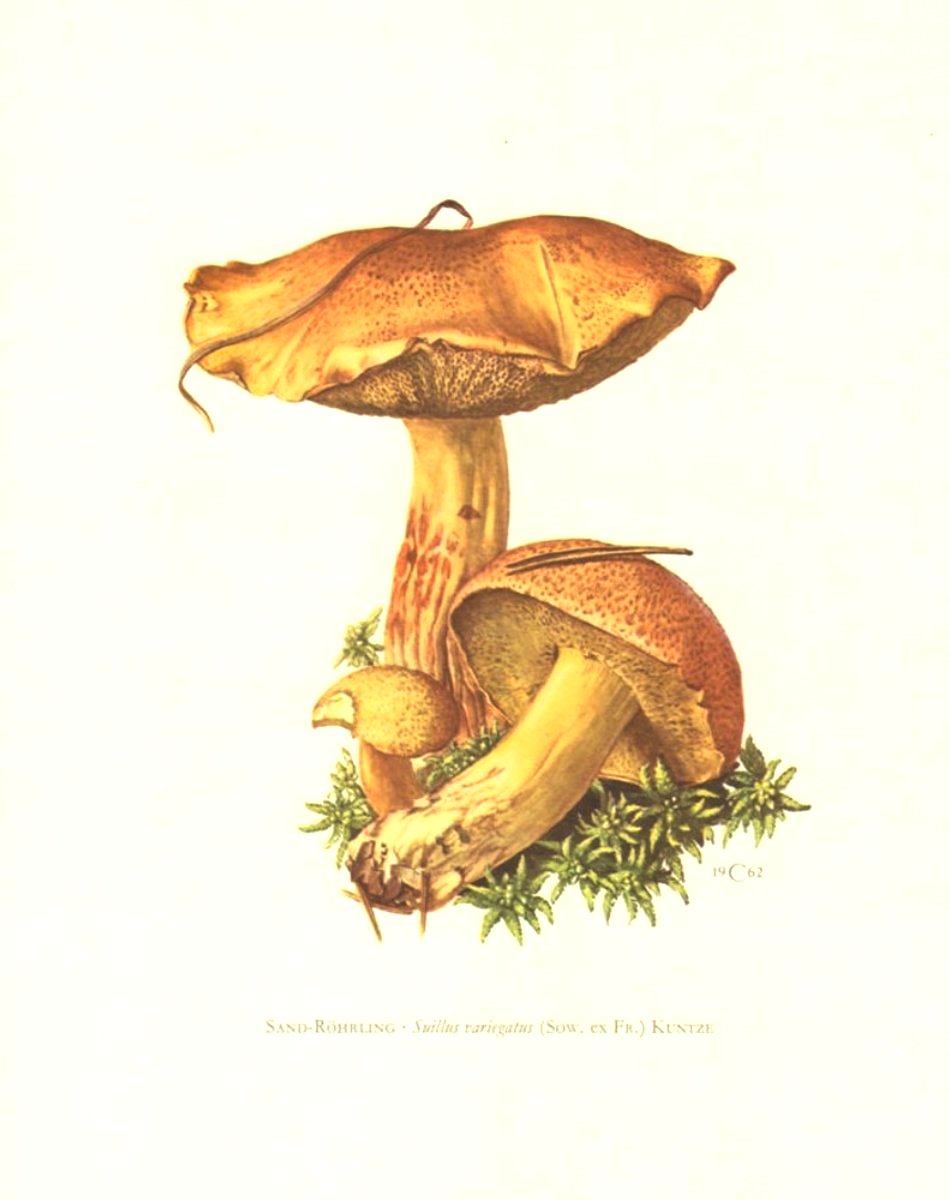Suillus variegatus
Suillus variegatus
Suillus variegatus, known as Velvet Bolete (Suillus variegatus (Swartz: Fr.) Kuntze) is a basidiomycete fungus of the Suillaceae family.
Systematics –
From the systematic point of view it belongs to the Eukaryota Domain, Fungi Kingdom, Basidiomycota Division, Basidiomycetes Class, Boletales Order, Suillaceae Family and therefore to the Genus Suillus and to the S. variegatus Species.
The terms: Boletus variegatus Sw. And Ixocomus variegatus (Sowerby) Quél ..
Etymology –
The term Suillus is the diminutive of sus, súis, pig: piglet, due to the particularly abundant size of mushrooms of this genus. The specific epithet variegatus comes from various vary, to be of different color: variegated, striated, mottled, multicolored.
Geographical Distribution and Habitat –
This Velvet Bolete grows in coniferous forests in a period that goes from summer to autumn.
Recognition –
The Suillus variegatus is recognized by the rather stocky, fleshy cap, with a diameter of up to 16 – 18 cm in length, of a brownish-yellow to ocher color, with a removable cuticle.
The pores are small, circular, of a dirty-yellow color, which then becomes brown due to the sporata; these turn to light blue to the touch. The tubules are yellowish in color and turn quickly to light blue when cut. .
The flesh is tender, with a yellow-brownish color – ocher; this, in certain specimens, can quickly darken when cut and take on a color towards dark green – gray and has an unpleasant smell of chlorine or rusty iron and mild taste.
At the microscope, spores of 7.5-12 x 3-5 µm are noted, ellipsoidal, fusiform, smooth and brown in bulk.
Cultivation –
Suillus variegatus is not a cultivated mushroom.
Uses and Traditions –
Suillus variegatus is an edible mushroom of little value due to the flaccidity of its flesh and its smell of chlorine or, according to other authors, not edible. The taste of this mushroom is described by some authors as metallic.
This fungus has the ability to concentrate Cesium 137. This data was found following a study conducted by Didier Michelot (CNRS) in France of 3,000 measurements of 15 metals in 120 specimens of fungi of various species.
Among the similar mushrooms with which it can be confused we mention Suillus viscidus, which also smells of chlorine.
Preparation Mode –
If this mushroom has been collected, consider that it is of poor edibility not only because of the unpleasant smell; moreover, the cuticle from the hat (like other mushrooms of the genus) must be practiced as it is often indigestible or “laxative”, even if non-toxic.
In general, therefore, we do not recommend picking it up and consuming it.
Guido Bissanti
Sources
– Wikipedia, the free encyclopedia.– Cetto B., 2008. The mushrooms from life, Saturnia, Trento.– Pignatti S., 1982. Flora of Italy, Edagricole, Bologna.– Conti F., Abbate G., Alessandrini A., Blasi C. (ed.), 2005. An annotated checklist of the Italian vascular flora, Palombi Editore.
Attention: Pharmaceutical applications and food uses are indicated for informational purposes only, do not in any way represent a medical prescription; therefore no responsibility is assumed for their use for curative, aesthetic or food purposes.


